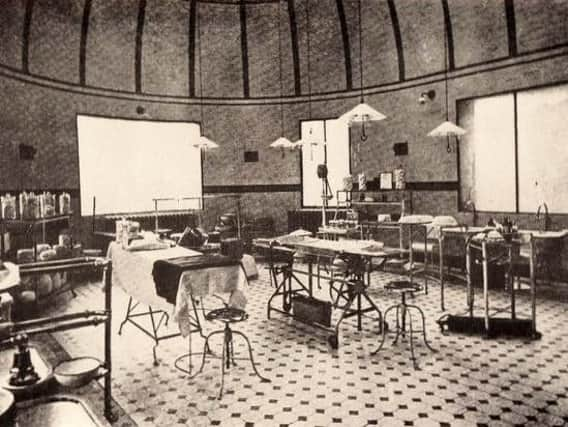Preston woman died after metal tube disappeared down her nostril in tragedy from yesteryear


On the third Friday of March 1914 Ellen Cookson, aged 50, the wife of Church Street baker Edward Cookson, visited the surgery of Dr Arthur Ernest Rayner having been diagnosed with deafness.
The doctor prescribing a procedure using radium treatment involving a metal cylinder, containing radium, being inserted into each ear and nostril alternatively. Unfortunately, when he came to take the cylinder from the left nostril it had disappeared. He searched the whole of her nose and mouth without finding it, and the patient herself was unaware of where it had gone.
Advertisement
Hide AdAdvertisement
Hide AdShe felt it may have dropped on the floor, but a resultant search was fruitless. Perplexed as to how the one inch cylinder could have disappeared he arranged for an X Ray examination to take place.
Dr. Rayner was in charge of the Preston Royal Infirmary X Ray department, opened a decade earlier thanks to the generosity of Dr. Charles Brown the eminent Preston physician, and he oversaw the examination. Much to his surprise the cylinder was found in her stomach and he could not believe that anything could have passed through the nostril, down the gullet, to the stomach without the patient being aware.
After discovering the cylinder Dr. Rayner tried to recover it by the usual methods, but was not successful, and it remained stationary for a week. He then advised Mrs Cookson and her husband that an operation would be necessary, a procedure that Dr. Collinson of the PRI agreed with after consultation. The fear being that if the cylinder remained in the stomach it may have become corrosive and burnt a hole in the stomach.
The operation attended by Dr. Rayner was skilfully performed and the cylinder recovered with Mrs. Cookson appearing well afterwards. However, when the doctor examined her on the following Monday she was unwell and he felt it could be the effects of the hypodermic injection that she had received before the operation containing atropine, morphine and hyoscine.
Advertisement
Hide AdAdvertisement
Hide AdOver the following days she appeared to be gradually recovering and Dr. Rayner was shocked on the Friday morning when he received a telephone call from house surgeon Dr. Jones saying that she had collapsed and died.
An inquest was held on the Saturday morning at the Preston Royal Infirmary before the county coroner Mr. John Parker. Edward Cookson and Dr. Rayner were amongst the witnesses called and the traumatic events were disclosed.
Dr. Rayner was quizzed about the injection and admitted that hyoscine could be a potent poison. Staff nurse Madge Jaggard was called to explain the procedure, and she stated she had been carrying out the work for over four years and had never known such a reaction to occur.
Regarding the cylinder the coroner suggested that the cylinders supplied from Berlin should in future be designed with a flange to prevent such an occurrence.
Advertisement
Hide AdAdvertisement
Hide AdWhen satisfied that all considerations had been heard the Coroner asked the jury to retire. When they returned they stated that Mrs. Cookson had died from heart failure resulting from the effects of the injection and they delivered a verdict of ‘death by misadventure’ .
Dr. Rayner was one of the sons of Dr. Alexander Clement Rayner, an eminent Victorian doctor who died in 1916, and his sister was Edith Rigby, the well known Preston suffragette. During the First World War he served in the Middle East as an army medic.
Once the war was over he was back at the Infirmary working long hours and tending to the sick. He was a great believer in psychiatry often being heard to say, ‘Make them believe the medicine works and it does’. He was still carrying out X-Rays in his 83rd year and his death took place three years later.